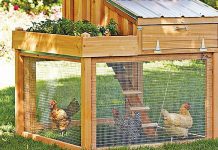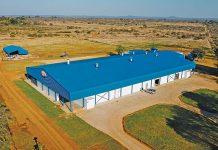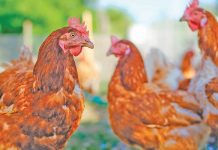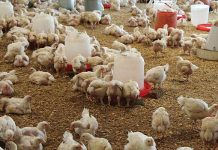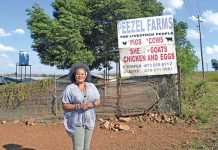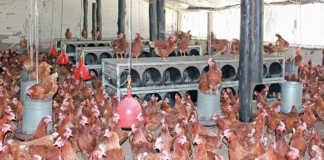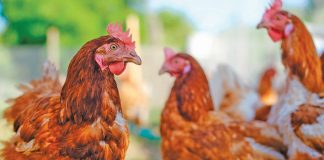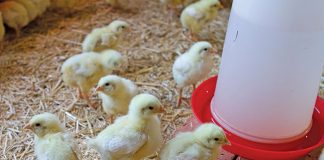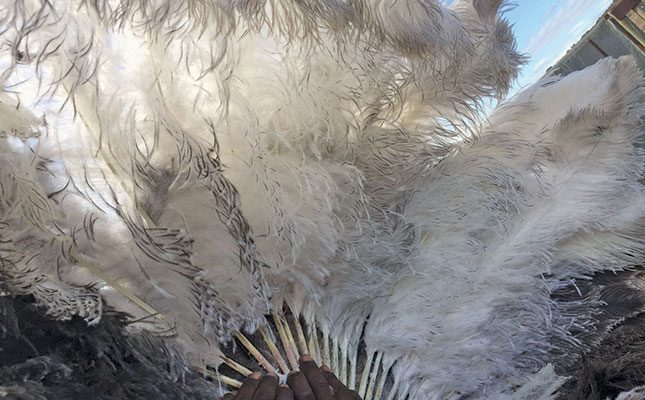
Photo: Laubscher Coetzee
Even though ostrich plumage never again generated the riches it did during the 1865 to 1870 and the 1900 to 1914 booms, the production of premium-quality ostrich feathers is allowing Laubscher Coetzee, who farms at Kandrift Boerdery near Oudtshoorn in the Klein Karoo, to weather droughts and market fluctuations.
“Our ostrich feathers fetch a 10% to 50% premium and are always in demand even during times of oversupply. The excellent quality of our genetics has also sparked a good demand for our day-old chicks,” says Coetzee.
He attributes the good quality of his genetics to “years and years” of careful selection. “When meat and leather prices were sky-high, some farmers imported genetics and focused on the production of huge ostriches with lots of meat and leather, but hardly any feathers. We, however, continued to focus on producing a balanced bird with good build, meat and feather quality.”
Breeding objectives
Instead of selecting birds to include in his breeding flock when they are six months old, Coetzee waits until the birds have their first mature feathers around 12 months of age. The top 25% of these birds are then selected, and the rest are sold to the slaughter market.
Selection is based on the physical appearance of the birds and the quality of their feathers. Coetzee explains that birds should be healthy, without any defects, and strongly built, otherwise they might be vulnerable to injuries and not live very long.
A strong build is especially important for females during the mating season, considering that males can weigh about 140kg when they are mature.
He adds that breeders reach their production peak from five to 15 years of age, at which stage they produce roughly 60 to 65 eggs per season.
Breeders on his farm, nevertheless, are kept until they are 20 to 25 years old, and sometimes even longer, thanks to the excellent quality of their feathers.
In terms of feather quality, Coetzee specifically evaluates the length, breadth, oiliness, density, shaft strength and curl of the feathers.
For instance, white feathers are approximately 60cm long and 30cm wide, according to the industry standard, whereas those at Kandrift Boerdery average above 70cm long and 40cm wide.
Furthermore, the feathers should be as compact as possible and have a high oil or fatty texture as this influences the lustre or shine of the feather, and the shaft should be strong to prevent breakage. Feathers are gathered when the breeder birds start to moult, which happens every eight months.
“There is a misconception that feathers are plucked and that this is painful to the bird. The reality is that the feathers are gently dislodged during the moulting season, without causing any pain to the bird. The process of gathering the feathers is also much more natural than shearing animals, as the ostriches are kept in an upright position the whole time,” says Coetzee.
Management
But good genetics will never reach its full potential unless the ostriches are managed properly and their dietary needs are met.
As part of Coetzee’s diversification strategy, the farm boosts a hatchery that produces between 7 000 and 8 000 day-old chicks from early August until January each year.
Coetzee’s son, Jacques, takes about 1 000 of these chicks to raise for the farm. The birds are taken in four batches, ranging from 200 to 300 per group.
The first batch is taken as early as possible when chicks become available, usually from August, while the second batch is taken a week later to create another uniform group.
The third batch is taken three to four weeks later, with the last batch taken a week after that. The chicks are basically hand-reared, so are tame, used to people, and easy to manage by the time they are mature.
Raising ostrich chicks is notoriously difficult, as the birds are sensitive to temperature fluctuations when they are young and easily bundle on top of one another when they are cold or frightened, which can result in mortalities.
The trick, according to Coetzee, is to have someone like Jacques, who is truly committed to the job: “This is such an important task that it cannot be given to just anyone. You need someone with a vested interest in the survival of the chicks.”
Breeding pairs
Over the past seven years, Coetzee downscaled his breeding flock to 600 birds because of the drought. As the drought was broken this year, he is in the process of rebuilding his flock.
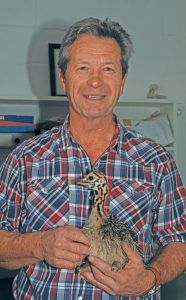
During the breeding season, running from mid-April to mid-December, the breeding birds are divided into smaller groups, consisting of two males for every three females. Each group, depending on the number of animals in the group, is then sent to one of 23 breeding camps.
The farm initially only had small camps, measuring 2ha to 3ha each, but Coetzee built larger camps of 80ha to 100ha in size as production expanded.
About 10 birds might be kept in the small camps and up to 80 in the large camps.
Each group is sent to the same camp each year because Coetzee feels that this helps to reduce stress as the birds are familiar with the environment and the other birds.
“It usually takes a few weeks for all the birds to get into the breeding cycle. Having a familiar environment helps to accelerate the time it takes for the birds to adapt.”
The camps are scouted for eggs every second day in winter and every day when it gets warmer from spring.
The males and females are separated into huge camps after the breeding season.
Coetzee explains that the males tend to chase the females if they are not separated from the females, and the females will continue to lay eggs if they are not moved to another camp.
“You need to move the females to a new environment to stop the laying cycle. If they continue to lay eggs, they might run into a calcium deficiency, even though their diets are enriched with calcium and other essential minerals and vitamins. A calcium deficiency can have a negative impact on their bone structure, and in effect their lifespan,” Coetzee explains.
The camps also need a rest, which helps to break disease and parasite cycles.
Feed
Ostrich chicks are given a commercial chick ration for the first 10 weeks of their lives to ensure they are off to the best possible start. From then on, they, like the slaughter birds and breeders, receive preformulated rations consisting of ingredients including lucerne, grain such as wheat, triticale or maize, and commercial concentrates.
To reduce feeding costs, the lucerne is produced on-farm on 170ha under irrigation. The drought had taken a huge toll on lucerne production, so Coetzee had to re-establish many camps over the past two years.
When establishing new camps, the lucerne is under-sown with a winter cover crop such as wheat or triticale, which helps to reduce the volume of maize that has to be bought in.
Coetzee points out that barley does not work as well as wheat or triticale as it tends to stool and in effect smothers the small, growing lucerne plants.
He plants SA Standard lucerne because this variety is hardy, cold and heat tolerant, and drought and graze resistant.
“SA Standard can be grazed flat onto the soil without damage to the plant, because it has a subterranean crown 4cm to 6cm under the ground.”
Coetzee has also found that SA Standard, when supplied with water, produces almost as much hay as imported varieties.A planting of SA Standard can last from five to 10 years, depending on whether it had received sufficient rainfall or water.
The lucerne is usually harvested for the first time in September each year, and then every four to five weeks depending on climatic conditions.
“We can get up to three lucerne harvests during a dry year. We allow the lucerne to go to seed towards the end of the season, from December, and then sell the seed as an extra farm income. This is not because we want to, but because our water dries up. The seed is sold for three to four times the value of lucerne hay,” says Coetzee.
Rations
Three different rations are mixed on the farm, with lucerne forming the basis of each. The chicks, from 11 weeks until about four months of age, receive a ration that is high in concentrates and maize, and slaughter rations from five months until they leave the farm at 12 months of age.
The breeder birds also receive a slaughter ration when they are not breeding to prevent them from putting on too much weight.
Coetzee explains that the production of breeders will be negatively affected if they are overweight at the start of the production season.The slaughter ration has a lower maize content than the chick and breeder rations, and does not contain any concentrates.
Coetzee had the foresight to build his own pelleting plant on the farm around 1996. The rations are pelleted before being given to the birds.
This helps to prevent feed ingredients and powder concentrates from getting blown away by the wind.
Coetzee says that many farmers make the mistake of taking short cuts during droughts to reduce feed costs.
The better solution, however, would be to downscale the number of animals so that the remaining ones can still be fed according to their nutritional demand.
“Animals that are not fed properly are more susceptible to diseases, especially in winter, when their energy demand is higher. During the drought, feed ran out from July to August in this region, forcing us to buy in more lucerne. When we have sufficient rain, however, we are able to store up for these difficult months.”
Coetzee admits that he has a rather conservative approach to farming.
“Many ostrich farmers got hurt over the past few years due to the drought, the impact of the COVID-19 pandemic on luxury product sales, and the impact of avian influenza on meat sales. I have found it better to be diversified, and focus on the production of high quality rather than chasing volumes. This way, you know there will always be a demand for your product,” he says.
Email Laubscher Coetzee at [email protected].


